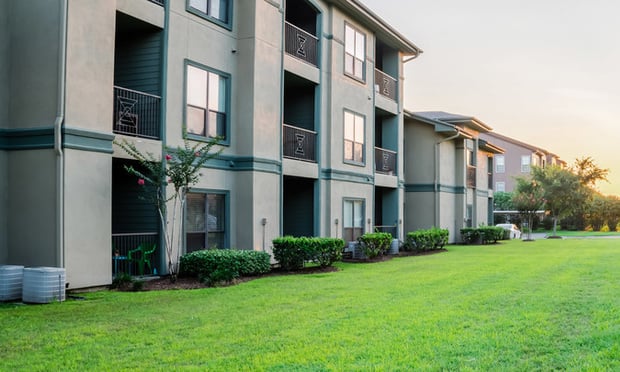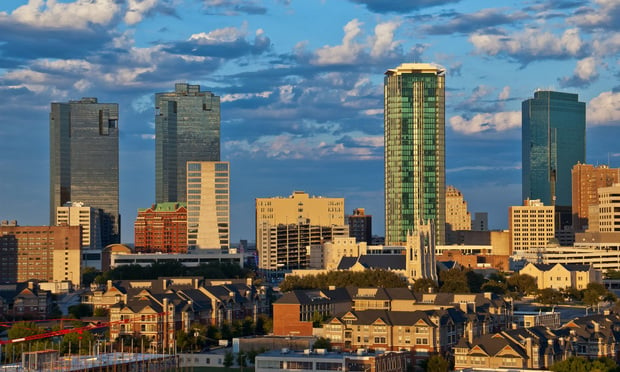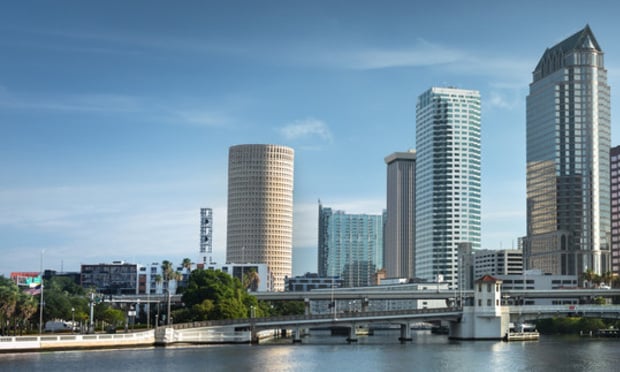But, the coming year is being painted with more of the same cautious optimism from industrial sector executives as those in the office arena. Most in the industry are adopting a wait-and-see attitude about the nation's economy while keeping fingers crossed for a status quo bare minimum. The saving grace for 2001 could be small tenant deals, which will outpace big-box transactions, predicts Randy Baird, a senior director for Cushman & Wakefield of Texas Inc.'s Dallas office.
"We recognize we are technically under the watch," Baird tells GlobeSt.com, "but the flip side is absorption has continued to hit record numbers and overall vacancy has stayed at 7% or lower for the last six years." That's just Dallas, but the same is pretty much true throughout the southwest.
Dallas had closed the third quarter, with 6.5 million sf in completions and 8.9 million sf in absorption. The average rental is $3.81 net per sf for warehouse space while office-showroom and tech space is fetching $8.68 per sf. The rents are slightly under Austin's average industrial cost, but running just a tad ahead of Houston and San Antonio. The lowest vacancy is 2.6% in the Richardson Telecom Corridor, says Baird.
Perhaps the best barometer of the Dallas-Ft. Worth's industrial market is Alliance, home to the nation's foremost industrial airport. As of Sept. 30, more than 3.1 million sf of industrial space has come to market this year in the Ft. Worth corridor. The Hillwood team is still calculating its year-end figures, but there's no doubt that 1996's record-breaking 3.4 million sf is now obsolete.
In Houston, construction completions and net absorption are about 2.9 million sf and nearly 3.2 million sf, respectively, as of the third quarter's close. Available manufacturing space is riding at 7.8% in comparison to 20.4% just five years ago. And, vacancies range between 1.5% in the CBD to 14.3% in the far south submarket. Like its sister cities, Houston's lead attraction is a thriving fiber-optic network that's giving birth to a promising future with telcom hotels.
Austin again ranks as one of the tighter markets in the state, bearing the strain of a 5% vacancy rate. An estimated one-third of the 2.1 million sf of warehouse space that's under construction already is pre-leased, according to NAI/Commercial Industrial Properties' semiannual report. The tight market makes it a landlord's utopia, pushing rental rates higher and higher. In comparison, the warehouse vacancy had stood at 3% at the close of 1999 while service center and flex space had a 7% vacancy.
Austin's main driver for the past two years--the high-tech industry--may bring some relief as restraint is practiced in expansions due to some hard times for the industry. Next year won't be quite as spectacular as this one, according to the Great Austin Chamber of Commerce's Economic Review 2000. A definite slowdown is predicted for business expansions and a fewer number of high-tech startups in the coming year.
Meanwhile, Denver's industrial sector is giving birth to new submarkets. Overall, the metro region boasts a low 4.9% vacancy rate and an average rent of $5.78 per sf. Lease rates are up 9.5%, sales prices up 3.8% and land sales climbing, says Alexander H. Ringsby, a leading industrial broker with Cushman & Wakefield of Colorado Inc.
Want to continue reading?
Become a Free ALM Digital Reader.
Once you are an ALM Digital Member, you’ll receive:
- Breaking commercial real estate news and analysis, on-site and via our newsletters and custom alerts
- Educational webcasts, white papers, and ebooks from industry thought leaders
- Critical coverage of the property casualty insurance and financial advisory markets on our other ALM sites, PropertyCasualty360 and ThinkAdvisor
Already have an account? Sign In Now
*May exclude premium content© 2024 ALM Global, LLC, All Rights Reserved. Request academic re-use from www.copyright.com. All other uses, submit a request to [email protected]. For more information visit Asset & Logo Licensing.








